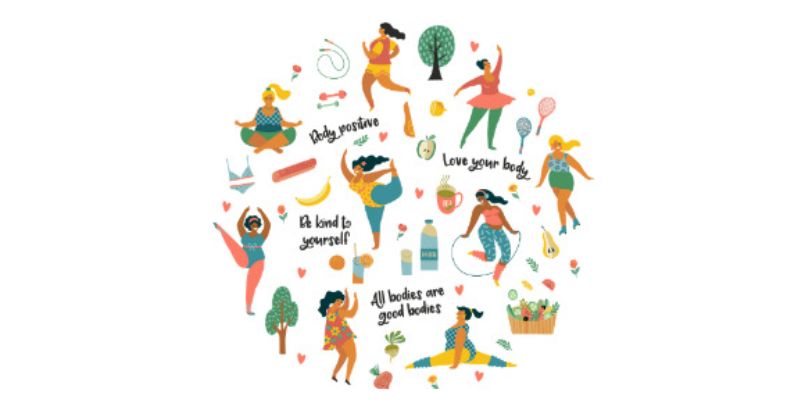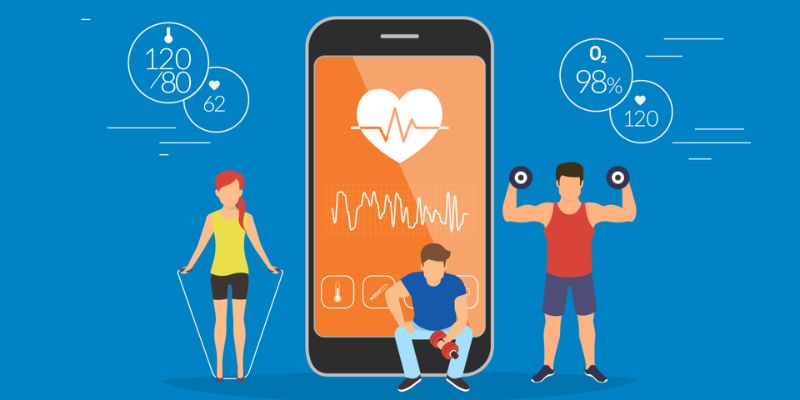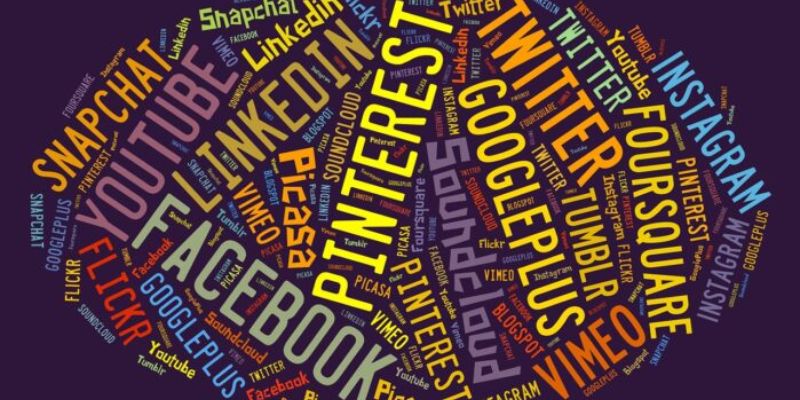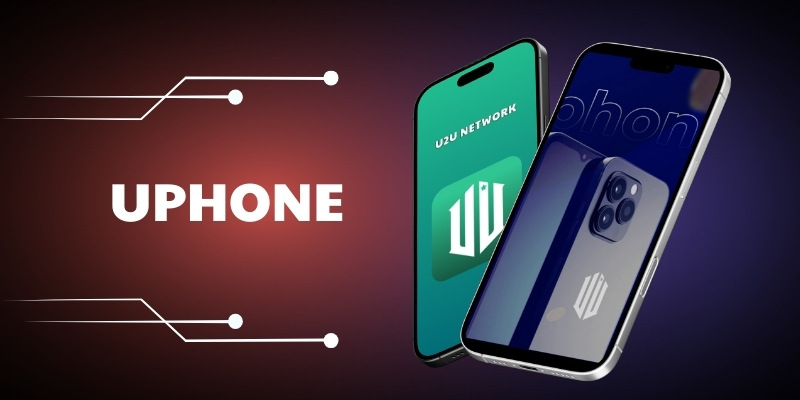Body positivity movements in the digital age aren’t just buzz phrases; they’re real waves reshaping social norms online. We’re watching a powerful rise of self-acceptance and championing diverse bodies. Platforms like Instagram and TikTok aren’t just for cute pets or dance challenges – they’re battlegrounds where beauty standards meet their match. Images once airbrushed to impossible perfection now make way for unfiltered realness. In this digital revolution, we dive into how hashtags became mighty tools in spreading love for all body types and how digital communities offer vital support, boosting confidence sky-high. Yet, the battle against body shaming lurks, forcing us to build safer spaces online. But take heart – we’re turning screens into springboards for real-world change, pushing the envelope from mere online activism to tangible, broad-spectrum shifts towards health and happiness at every size. Join me as we uncover the layers and learn how we all contribute to this pivotal moment for body positivity.
The Rise of Body Positivity on Social Media Platforms
The Role of Hashtag Campaigns in Spreading Body Positivity
Hashtags link countless stories of self-love on social media. These tags unite people. They make it easy to find others who celebrate body diversity. Hashtags turn personal victories into public inspiration. They help in spreading a message of acceptance across Instagram, TikTok, and more.
Instagram and TikTok: Pioneers of the Body Positive Movement
Instagram and TikTok have led the charge for change. They allow us to share and celebrate every shape and size. Here, real people become body positive role models. They show life beyond filters and edited photos. They encourage us to embrace who we are, as we are.
Instagram body positivity trends show real skin, real curves, and real stories. They teach us that beauty is diverse. On TikTok, dances and talks boast self-love. They tell us it’s okay to love our bodies. If we stumble upon negative comments, we fight them with positivity. We lift each other up, proving that words of support are mightier.
When a plus-size person dances joyfully, it echoes across the web. Size acceptance hashtags follow, celebrating every jiggle and bounce. This movement isn’t just about feeling good. It’s about raw representation in the digital age. It’s about seeing a body like yours moving with joy and thinking, “I can do that too!”
Body positivity on social media does more than just show us pictures. It connects us to virtual communities for body confidence. It urges us to stand against cyberbullying. Influencers become our guides, teaching us how to block the hate and focus on love.
It can be hard to love yourself with so many perfect images online. But remember, for every filtered photo, there’s someone real behind it. Someone with their own struggles and triumphs. Someone who might also need a kindness boost. When we comment with heart emojis and kind words, we spread a little more love in the world.
Digital platforms aren’t only for scrolling; they’re for learning and growing. Online body image education comes in all forms. It can be a quick TikTok video or a deep Instagram post. Both can change how we see ourselves and others. The health at every size movement grows stronger with every share. It tells us health isn’t a size; it’s a way of life.
Trends will come and go on social media. But the push for body diversity on the internet is here to stay. It’s not a fad; it’s a shift in how we think about beauty and health. And guess what? You’re part of this shift every time you like, share, or post about loving yourself just as you are.

Building Digital Communities for Enhanced Body Confidence
Virtual Support Networks and Their Impact on Self-Esteem
Today, we find many friends in places we can’t touch or see. Places like Facebook, Instagram, and Twitter. These friends cheer us on as we try to love our bodies. They clap for us when we share our wins. And when we fall, they are there to lift us up. This support is key to feeling good about who we are.
In these spaces, we join hands — through likes, shares, and supportive words — to fight the battle against body hate. I see it every day. People start to believe in their worth. They do this with help from others they may never meet in person.
Digital platforms work like magic to drum up this kind of support. They help to spread love far and wide. They make the world smaller, and they remind us that we’re not alone. From hashtags that shout ‘Every body is beautiful’ to groups that talk about self-love, the web is a place that can make us feel good in our skin.
Success Stories: How Digital Platforms Foster Body Autonomy
Let me tell you about Sam. Sam was not happy with what she saw in the mirror. Then, she found a group online. This group talked about how each of us has the right to love our bodies. They showed her that each shape and size has its beauty. Sam got strength from this group’s stories and photos. She learned to say, ‘This is me, and I’m okay with that.’
Sam’s journey is one of many. From blog posts to live chats, online spots have the power to change minds and hearts. These stories spark change. They tell us to hug our so-called flaws, and they dare us to walk with pride. This is how the digital world gives us power over our own bodies.
When I look at these stories, it’s clear how much change one person can spark. It starts with a photo or a post and grows into a web of care and support. We see people grow bolder as they learn to love their looks. This is what the digital age promises us: a chance to be truly free, to own our bodies without fear, and to love every bit of ourselves.
Every time we add our voice, share a post, or use a hashtag, we are part of this story. We are knitting a world of body cheerleaders. One where self-love is normal, and where we all belong, no matter our shape or size. It’s a world we build with every click, share, and heart we give.
Let’s keep this web growing, because when we stand together online, we stand stronger. And as we tap our screens, let’s remember the people like Sam, whose lives we might be changing — perhaps even without knowing. This is the power of our digital family, a place where body confidence blooms.

Addressing the Challenges: Combatting Online Body Shaming and Cyberbullying
The Intersection of Mental Health and Body Image on Social Media
Social media shapes how we see our bodies. Every day, we glance at pictures of folks with ‘perfect’ lives and bodies. It affects our brain. Makes us doubt ourselves. But remember, not all we see online is true. People only share their best moments, not the tough times. This affects our mental health. We feel down or think we’re not good.
But there’s good news too. Digital spaces now push for self-love in social media. They urge us to love our shapes, sizes, and stories. More folks are showing real, unedited pictures. They combat the fake ‘perfect’ image. And it helps. It makes us all feel less alone.
Promoting self-acceptance online is a big goal. Simple posts saying ‘You’re enough’ make a huge impact. When we see different bodies being loved, it lifts us too. Size acceptance hashtags spread the message. They make us proud of our unique selves. Hashtags like #BodyPositivity and #LoveYourself speak to thousands. They build a world that cheers every body type.
Strategies for Creating Safer, More Inclusive Online Spaces
Feeling safe online matters. We don’t want hate or hurt from body shaming. So, how can we make kinder spaces on the web? Start by celebrating body diversity on the internet. Share stories and pictures that honor all kinds. Stand up to bullies who shame others. This makes our digital hangouts better for everyone.
Digital platforms and inclusivity can go hand in hand. Sites can set rules that fight bullying. They can build tools for us to report unkind words. When we make online friends that like us as we are, it’s a joy. Virtual communities for body confidence are like safe spots for us to be the real us.
And leaders online, like social media influencers on body image, have power. When they talk about embracing all sizes, people listen. They change the game. They show that beauty’s not just one look. It makes us think and feels better about our bodies.
We can’t stop all the mean words online. But we can choose to look at and share kind stuff. Stuff that makes us feel strong. We can aim for a web that loves every person’s looks.
With heart and action, we can turn the online world around. We can make it a place that cheers us on, just as we are. Let’s keep moving towards a web that’s good for all hearts and minds. Where no one’s left out and we feel at home just as we are.

Beyond the Screen: Activism and Real-World Implications
The Influence of Digital Media on Health at Every Size Movements
Health at every size (HAES) movements have grown. This is thanks to digital media. People learn about HAES online. They find out that health is not just about size. Online, we share stories and facts to teach this. Moreover, digital media lets us spread ideas fast. Key messages on health and size reach far. This helps more people think about health in new ways.
Social media also joins folks from around the globe. They all advocate for body respect. They believe in health for all, no matter one’s size. Size acceptance hashtags trend. They unite people who push for change. These hashtags include stories of real-life success. They show it’s possible to love yourself as you are.
Empowering Users Through Education and Digital Storytelling
Stories are powerful. They share our lives. They show us we’re not alone. Online, we find tales of others’ journeys. We learn from their struggles and wins. Celebrating all body types becomes easier. We see real bodies, not just tough beauty standards. This helps our self-love grow.
Digital storytelling also educates. It tells everyone that every size is okay. It shows us how to treat our bodies with love. With each shared story, we fight against body shaming. We stand against the views that hurt so many. Educating through stories is a key way to show that all bodies are good bodies.
We also learn to spot and beat cyberbullying. We find ways to use digital platforms for good. Plus, we see more and more body diverse role models. They lead us by example. These leaders show us how to embrace everyone. They prompt us to love who we are.
And as we learn, we form digital support networks. These networks boost our self-esteem. They’re made up of people like us. People who face the same struggles. Together, we learn. We share. More so, we uplift one another. Thus, we grow stronger.
This is what makes the digital age so special. It’s not all about what’s on screen. The real power is the change it creates within us. It moves us to act in the real world. We become more accepting, loving, and kind. We tackle body discrimination. We support mental health. And we spread love for all bodies, including our own.
In the digital age, our voices gather strength. We’re louder together. We reshape what used to be firm views on beauty. We set new, inclusive norms. We celebrate diversity. No one is left out of this new, digital revolution. It’s a time of change, of growth, of hope. And it’s a time where every story, every voice, matters. It’s our time.
To wrap up, we’ve seen how social media boosts body positivity. Campaigns with hashtags and platforms like Instagram and TikTok are leading the way, helping to paint a new picture: one that celebrates bodies of all shapes and sizes.
We also dove into how online groups give people confidence. With support from others, folks feel better about their bodies. They take control of their images, and that’s a big win. The stories we hear show us just how much good these digital spaces can do.
But it’s not all smooth sailing. We face tough stuff like shaming and bullying online. Our mental health can take hits over body image issues. Yet, by making safer spaces and teaching each other, we fight back.
Lastly, we can’t forget how these online movements reach beyond our screens. They push for change in real life, with movements like Health at Every Size. And with every share, like, or post, we all play a part in this story.
Remember, every click, every word you put out there, has power. Use it well and let’s keep the good fight going—online and off. Let’s build a world where we all feel great about who we are.
Q&A :
How have body positivity movements evolved with the rise of digital platforms?
The advent of digital platforms has led to the proliferation of diverse body images that challenge traditional beauty standards. Social media, in particular, serves as a catalyst for body positivity by allowing people to share their stories, celebrate all body types, and create supportive communities. This digital shift has pushed for greater inclusivity and representation within mainstream media as well.
What role do influencers play in the body positivity movements online?
Influencers have a significant impact on body positivity movements online by leveraging their platforms to promote self-acceptance and challenge societal norms. Many influencers openly discuss their own body image struggles and recovery journeys, creating relatable content that encourages followers to embrace their individuality. Their advocacy for body diversity helps to destigmatize conversations around body image issues.
How is the body positivity movement addressing digital alteration and retouching of images?
The body positivity movement actively confronts digital alteration and retouching in images, which can set unrealistic and harmful beauty standards. Campaigns and initiatives advocate for unretouched photos to be the norm, promoting natural beauty and authenticity. Additionally, some movements are calling for legislative changes, such as the requirement for labels on digitally altered images in advertising, to foster transparency and encourage self-acceptance.
In what ways can individuals support body positivity movements through their digital behavior?
Individuals can support body positivity movements digitally by following and engaging with content that celebrates all body types, sharing messages of inclusivity, and challenging negative online behaviors. Creating or contributing to positive content, calling out cyberbullying, and supporting brands that promote diversity are ways to make a difference. Moreover, practicing mindful consumption of media and encouraging respectful discourse online help reinforce body positive values.
Are there any risks associated with body positivity movements in the digital age?
While body positivity movements aim to empower individuals, there are concerns that some messaging could be misunderstood or misused in digital spaces. For instance, the emphasis on ‘loving one’s body’ might inadvertently minimize the importance of discussing healthy lifestyle choices. There is also the risk that the commercialization of the movement could dilute its message. Navigating these complexities requires ongoing dialogue and education to maintain the integrity and inclusivity of the movement.



